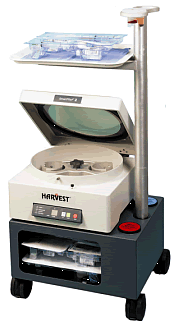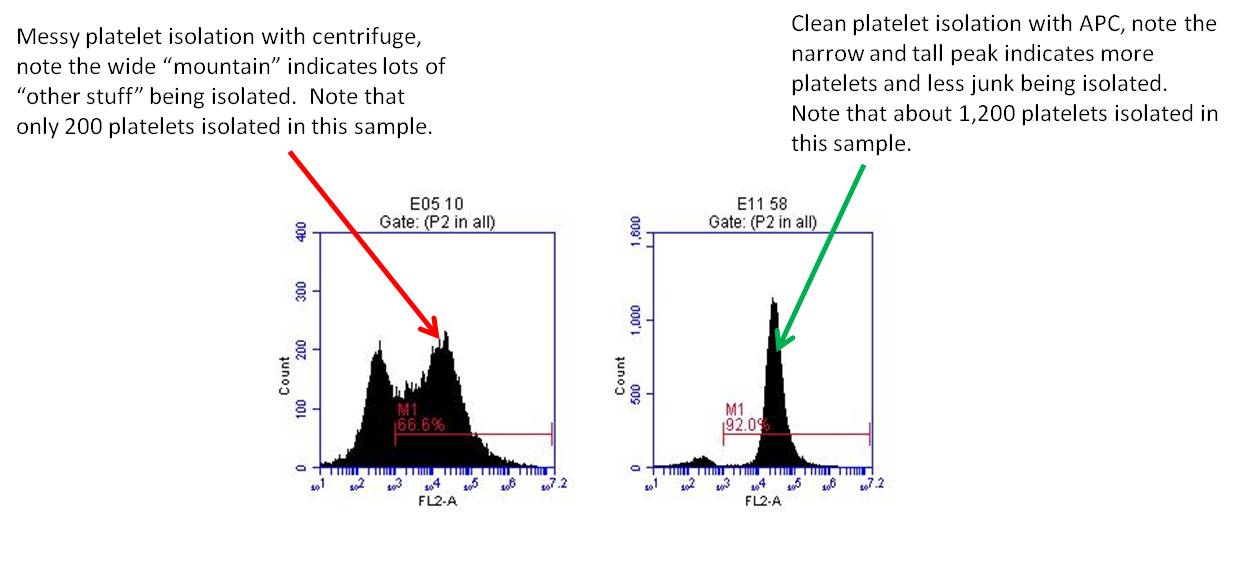PRP Injections in Denver, Colorado
PRP TREATMENTS In Broomfield & DENVER, COLORADO
Am I a Candidate?Regenexx-SCP Procedures
- Delivering up to 10-40x more platelet concentration than standard PRP
- Fully customized
- Labratory processed for quality and sterility
What is PRP?
PRP is short for platelet-rich plasma, and it is autologous blood with concentrations of platelets above baseline values (1). The potential benefit of platelet-rich plasma has received considerable interest due to the appeal of a simple, safe, and minimally invasive method of applying growth factors. PRP treatments are a form of regenerative medicine that utilizes the blood’s healing factors to help the body repair itself by means of injecting PRP into the damaged tissue. In regenerative orthopedics, it is typically used for the treatment of muscle strains, tears, ligament tears, tendon tears, minor arthritis, and joint instability.
There have been more than 30 randomized controlled trials of PRP, and it has been shown to help the body heal itself by its stimulating effect on the stem cells within the targeted area. In fact, our own Dr. Chris Centeno has used the analogy of “expresso shots” to explain how PRP and our patented Platelet Lysate work within and with the body.
Super Concentrated Platelet Rich Plasma Procedures
Why Regenexx PRP Treatments Are VERY Different
Invented at the Centeno-Schultz Clinic, Regenexx’s Super Concentrated PRP procedures are an advanced form of PRP treatment that utilizes lab-processed PRP mixtures that have been shown to deliver up to 10 – 40x times more platelet concentrations than the standard “bloody” PRP. In fact, our PRP, because of its concentration levels of platelets, takes on an amber color.
Why Regenexx PRP Mixtures are Better than Standard PRP / Platelet Rich Plasma
In most clinics that offer PRP therapies, the method of developing PRP involves removing a patient’s blood and running it through a simple bedside centrifuge machine to separate the plasma and concentrate the blood platelets, which are then immediately extracted and used as the injectate. These devices are not great at getting rid of unfavorable cells from the resulting mixture. Our lab tests show that white and red blood cells have an inhibiting effect on the same stem cells the platelets are attempting to stimulate and might cause excessive inflammation following the injection.
Our PRP is purer, concentrated, and customizable because it is produced in a laboratory setting by an experienced technician who can separate and concentrate all the blood’s good components and remove the unfavorable ones.
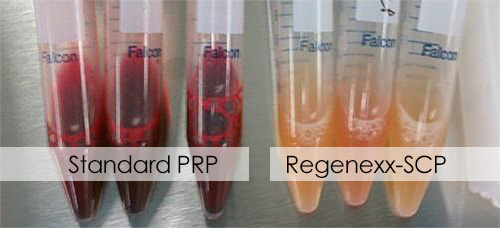
Regenexx Platelet Lysate
Third & Fourth Generation
Platelet lysate (PL) is an even more highly developed variation of platelet-rich plasma. PRP works by concentrated platelets slowly releasing growth factors over approximately a week. Much like a timed-release version of a pill. If you need an immediate-release variation, with many more factors available en masse, you use a platelet lysate (PL).
In our experience, while PRP can trigger inflammation, PL is remarkably anti-inflammatory and is used even more safely around nerves, which is why it is typically used in our spinal column procedures. Regenexx uses the most sophisticated platelet lysate available. While many are just starting to learn more about PL, we are in our third and fourth generation, advancing the efficacy of our mixtures continuously.
Critical Differences in PRP: Laboratory Prepared vs Bedside
Not all platelet-rich plasma (PRP) preparations are the same. The majority of PRP preparations are created by bedside centrifuge units. At Regenexx we are constantly striving to improve clinical results. Our state-of-the-art cellular laboratory enables us to experiment on different ways to get more platelets out of a given sample.
We recently ran an experiment with 5 patient samples trying 5 different techniques to maximize platelet concentration in platelet-rich plasma. A flow cytometer was used to measure the number of platelets being isolated and how ‘clean” the isolation was in the mix. Clean isolation was preferred since it meant it had little extra platelet matter( cell membranes.)
The results demonstrated that the centrifuge techniques similar to bedside PRP did NOT produce the best platelet concentrates. In fact, they tended to produce fewer platelets and more non-platelet matter than other techniques.
A proprietary simple laboratory technique has been developed that provides more platelets and much cleaner isolation. It is called APC: autologous platelet concentration so as to differentiate it from PRP. It produced 237% more platelets when compared with traditional bedside centrifuge units.
Below is a graph that demonstrates the significant differences. The graph on the left has a wide mountain reflective of significant non-platelet matter whereas the graph on the right has a narrow tall peak reflective of cleaner isolation. The total number of platelets on the left is 200 vs 1200 produced by the laboratory.
Bottom line: laboratory-prepared autologous platelet concentrate provides a larger number of platelets in cleaner isolation. This difference translates to improved healing and faster recovery.
Platelet-Rich Plasma Injections vs. Steroid Shots
How PRP treatments and Steroid Shots Differ in Terms of Recovery
The idea behind PRP instead of steroid shots is that, instead of injecting something that will lessen swelling in the short term and impede healing, the doctor is opting to inject something which has the potential to prompt recovery. This is because the platelets in the PRP have healing growth factors that will likely help the injured tissue mend (2). In this way, it is a superior alternative to steroid shots.
- In the graph below, PRP has an initial flare-up which goes away in 3-7 days. And, after that, the patient gradually gets better than baseline.
- For steroids, it’s the contrary, with the individual feeling better quicker, but after that, the effects disappear over a number of weeks, and the discomfort returns.
- Surgical intervention has a longer pain period for weeks and then the individual gets slowly better.
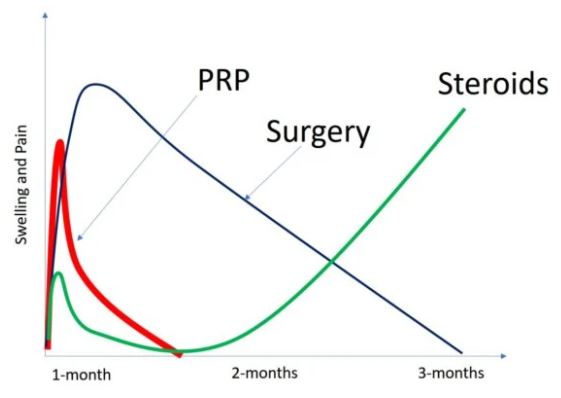
Why Centeno-Schultz Clinic is the Prime Destination for Regenexx-SCP Procedures
Centeno-Schultz Doctors Are Pioneers of Interventional Orthopedics
Our Board-Certified & Fellowship trained physicians have helped more orthopedic patients using Interventional Orthopedics than any other regenerative medicine clinic in the world.
Our Extensive Research & Data-Driven Approach
Our scientific, data-driven approach and extensive research publications ensures our patients receive the highest level of care possible.
Fully Customized PRP Mixtures to Target YOUR Specific Injury or Condition
Not all injuries are alike, even if they appear to. Get the specific dose and concentration your condition requires, only possible with a Regenexx® flexible lab platform.
SANS Evaluation
In our diagnostic examinations, you will spend a full hour with a CSC physician who will use our four-part SANS (stability, articulation, neuromuscular, and symmetry) method of evaluation to identify underlying causes of your pain.
Conditions Treated with PRP in Colorado
AC Joint Impingement
AC joint Impingement is a painful condition that occurs when the space beneath the acromion bone is narrowed. This narrowing can result in irritation of the rotator cuff tendons and bursa. A bursa is a fluid-filled sac that reduces the friction on tendons and muscles as they cross bony surfaces. A tendon is thick collagen tissue that connects muscles to bones. The rotator cuff tendons provide important support and enable movement in the shoulder. If severe, impingement can cause tears in the rotator cuff tendons. Patients with AC joint impingement typically have pain with elevation of the arm and or while lying on the shoulder.
Read More About AC Joint ImpingementAC Joint Impingement Demo
AC joint Impingement is a painful condition that occurs when the space beneath the acromion bone is narrowed. This narrowing can result in irritation of the rotator cuff tendons and bursa. A bursa is a fluid-filled sac that reduces the friction on tendons and muscles as they cross bony surfaces. A tendon is thick collagen tissue that connects muscles to bones. The rotator cuff tendons provide important support and enable movement in the shoulder. If severe, impingement can cause tears in the rotator cuff tendons. Patients with AC joint impingement typically have pain with elevation of the arm and or while lying on the shoulder.
Read More About AC Joint Impingement DemoAchilles Tendonitis
Heel pain is one of those issues that can affect most of what you do in a day and can be disabling. A common cause of heel pain is the Achilles tendon. What is the Achilles tendon? What is Achilles tendonitis? What are the different injuries? Is stem cell therapy for Achilles tendonitis a viable option? Where & What Is the Achilles Tendon? A tendon is a thick fibrous band of connective tissue that connects a muscle to bone. There are more than 30 million tendon and ligament injuries annually. The Achilles tendon, which is the thickest tendon in the body connects the calf muscles to the heel bone. It consists of the gastrocnemius and soleus muscles that unite to form a thick band that is immediately above the heel tab on your shoe. It enables the downward movement of the foot and bending of the knee.
Read More About Achilles TendonitisACL Tears
The Anterior Cruciate Ligament (ACL) is one of four major ligaments in the knee. It is an important stabilizer of the knee and prevents the shin bone (tibia) from sliding in front of the thigh bone (femur). The ACL is susceptible to injury. It is most likely to be injured during activity or by impact. A torn ACL is a common injury for athletes at all levels, but it is most common for people who are active or who experience impact injuries to the knee. ACL injuries can happen to anyone of any age, condition, or ability, and it can be injured in many ways. Examples include abruptly changing direction, slowing down while running, landing incorrectly, or getting struck by someone or some object.
Read More About ACL TearsAnkle Arthritis
Your ankle is located where the distal ends of the tibia and fibula bones (lower-leg bones) meet the talus bone at the foot. Between these bones are the ankle joints (e.g., tibiotalar, tibiofibular, subtalar, etc.). The ankle joint also consists of strong supporting tendons and ligaments. If you consistently experience ankle pain with walking or running or carrying a heavy load, this could be tendon inflammation, ligament instability, or arthritis in one of those joints.
Read More About Ankle ArthritisAnkle Tendon Tear
Have you been told you have an ankle tendon tear and need surgery? Do you really need this procedure or will less invasive injections do the trick? Let’s review ankle tendon surgery and who needs it and who doesn’t. The ankle has many tendons that come from leg muscles. They help stabilize the ankle and move the foot up, down, left, and right. The ankle tendons include: Peroneal FHL (Flexor Hallicus Longus) Tibialis Posterior FDL (Flexor Digitorum Longus) Tibialis Anterior Achilles These can be torn in trauma or due to wear and tear.
Read More About Ankle Tendon TearAnnular Tear
To understand annular tears, let us first review the anatomy of the spine. The lumbar spine is comprised of 5 boney building blocks called vertebral bodies. Sandwiched between the vertebral bodies are the lumbar discs. Each disc is comprised of an outer fibrous ring, the annulus fibrosis that surrounds the inner gelatinous center, which is called the nucleus. The disc absorbs the forces of daily living. The annulus has multiple layers of collagen that provide important support. The annulus is similar to the sidewall of a tire which provides important stability for the tire. Through trauma or degeneration, the outer annular fibers can become injured and or weakened.
Read More About Annular TearAtlantoaxial Instability (AAI)
Instability simply means that bones move around too much, usually due to damaged ligaments. In the spine, this can cause nerves to get banged into and joints to get damaged. In the craniocervical junction, instability can cause the upper cervical spinal nerves to get irritated, leading to headaches. In addition, the C0-C1 and C1-C2 facet joints can also get damaged. In addition, there are other nerves that exit the skull here that can get irritated, like the vagus nerve, which can cause rapid heart rate. What’s the Difference Between CCI and AAI? CCI refers to instability in any part of the craniocervical junction…
Read More About Atlantoaxial Instability (AAI)Avascular Necrosis of the Shoulder
Avascular Necrosis is essentially a lack of blood flow, eventually resulting in necrosis, or dying of the bone. This happens in multiple joints. And today we are talking specifically about the shoulder. So talking about AVN in the shoulder, patients typically come up with two main questions. Number one, can this heal on its own? And if not, how long or how fast will this progress? Now we classify AVN in multiple different stages: Number one: we have stage one, where it is very normal X-ray — usually, typically, someone just has pain with activity. Is the bone itself continues to deteriorate, then we start getting some changes on your X-ray.
Read More About Avascular Necrosis of the ShoulderBaker’s Cyst
A Baker’s cyst can cause knee pain. A Baker cyst is swelling caused by fluid from the knee joint protruding to the back of the knee. They are NOT a true cyst since it has communication with the synovial sac. They typically arise from degenerative changes or injury to the articular cartilage (arthritis) or meniscus. At the Centeno-Schultz Clinic, we believe that baker’s Cysts are simply a barometer of the health of the knee joint. In a healthy knee, there are absent whereas with injury and degenerative changes they are common. They arise between the tendons of the medial head…
Read More About Baker’s CystBasal Joint Arthritis or CMC / Carpometacarpal Arthritis
The thumb is also referred to as the CMC joint. It is composed of two bones. The Carpal bone is denoted by the letter C. The second bone, the MC is the MetaCarpal bone. So your thumb is made up of the Carpal and MetaCarpal bones that come together and form a joint. The joint is lined with cartilage which allows the two bones to slide smoothly against one another. The thumb joint is held together by multiple thick ligaments. Ligaments are thick pieces of connective tissue that connect one bone to another. This joint is a saddle-shaped joint that experiences significant forces through activities of daily living.
Read More About Basal Joint Arthritis or CMC / Carpometacarpal ArthritisBaxter’s Neuropathy
It is an entrapment syndrome, like carpal tunnel syndrome in your hand. This is an entrapment of a nerve in your foot, right around your heel, on the inside part compressing a branch of your tibial nerve called your inferior calcaneal nerve, and that is the Baxter’s nerve. Now, the inferior calcaneal nerve is the first branch of the lateral plantar nerve, which is a branch off your tibial nerve. It lives between a muscle belly called your abductor hallucis muscle, as well as the medial calcaneal tuberosity, which is a small bump where a common heel spur occurs in the foot.
Read More About Baxter’s NeuropathyBone Spurs In The Knee
Bone spurs, also known as osteophytes, are abnormal growths that can form along any bony surface in the body. They most frequently occur where tendons and ligaments attach to the bone. As a result, they are more commonly seen in large mobile joints that support weight, such as the hips, spine, ankles, or knees. Surprisingly, most bone spurs are relatively benign but are a clinical sign of instability in the area. Research demonstrates that if a ligament has laxity, the constant strain at the insertion into the bone will elevate the surface of the bone, creating additional bone formation – this is known as a traction osteophyte.
Read More About Bone Spurs In The KneeBulging Disc In Thoracic Spine
A bulging disc in the thoracic spine is a serious medical condition that occurs when the outer layer of the disc weakens, causing it to bulge outward and put pressure on nerves and the spinal cord. The disc has two components, a soft center and a thick outer layer, and weakening or tears in the outer layer can lead to a bulge. Symptoms include pain, numbness, and weakness in the affected area. The thoracic spine is that portion of the spine that resides below the neck and above the low back. It is commonly referred to as the mid-back. A bulging…
Read More About Bulging Disc In Thoracic SpineCalcific Tendonitis
Calcific tendonitis, also known as calcifying tendonitis, is a condition characterized by the formation of calcium deposits in a tendon, most commonly in the rotator cuff tendons of the shoulder. These deposits are not due to injury or trauma but rather occur spontaneously. Tendons, the thick connective tissues that link muscles to bones, aren’t usually calcified. However, in calcific tendonitis, calcium builds up in these tissues, which can result in inflammation and severe pain. This condition tends to occur more commonly in adults between 30 and 60 years old, and it’s more prevalent in women than in men.
Read More About Calcific TendonitisCarpal Tunnel Syndrome
The carpal tunnel is a tunnel-like structure in the wrist that the median nerve travels through. There are also carpal ligaments that form the roof of the tunnel and flexor tendons that also run through the tunnel. The median nerve is a branch that generates off the brachial plexus from the cervical spine in the neck. It stretches down through the arm, the wrist, and all the way into the thumb. The flexor tendons provide stability and help bend the thumb and fingers. When something causes the tunnel to narrow or the medial nerve somehow becomes compressed in the wrist, this can lead to carpal tunnel syndrome (CTS).
Read More About Carpal Tunnel SyndromeCervical Facet Syndrome
Cervical facet syndrome, also known as cervical facet joint pain, is a condition that occurs when the facet joints in the cervical spine become inflamed or damaged. The facet joints are small joints located between the neck vertebrae, which help to provide stability and facilitate movement. When these joints become irritated or injured, they can cause pain and discomfort in the neck and surrounding areas. Symptoms of cervical facet syndrome can include neck pain, stiffness, headaches, and even radiating pain into the shoulders, arms, and upper back. Treatment options for cervical facet syndrome may include physical therapy, medications, injections, or in some cases, surgery.
Read More About Cervical Facet SyndromeCervical Medullary Syndrome
Cervical Medullary Syndrome is a clinical condition that occurs as a result of inflammation, deformity, or compression of the lower part of the brain. Symptoms can be extensive with fluctuating severity based upon the extent of the underlying injury. For example, mild irritation of the brainstem may cause only mild, intermittent symptoms. The upper cervical spine and brain are complex with multiple structures. These structures reside within the skull and protective confines of the cervical spine. Neither expands to accommodate inflammation, injury, and disease. Rather the delicate tissues of the brain and spinal cord are irritated or compressed. The 4 major conditions that cause cervical medullary syndrome are…
Read More About Cervical Medullary SyndromeCervical Radiculopathy
Common Cervical Radiculopathy symptoms include neck pain, arm pain, shoulder pain radiating down arm to fingers, numbness, tingling, and weakness. Cervical Radiculopathy is a clinical condition in which a nerve or nerves in your neck become irritated or compressed. It is also known as ” a pinched nerve,” The causes are discussed below. It can affect individuals of any age with peak prominence between ages 40-50 years of age. Cervical Radiculopathy is due to spinal nerve inflammation, irritation, or compression. The most common causes of Cervical Radiculopathy are: Disc Injury – The disc is an important shock absorber. Unfortunately, it is susceptible to injury.
Read More About Cervical RadiculopathyChondromalacia
Chondromalacia is the knee usually causes pain, typically around the kneecap or deep in the kneecap. You can also have some grinding sensations or crepitus which are sounds and noises coming from around the knee with certain motions. Typically, pain and grinding sensations are worse with bending the knee, especially for prolonged periods of time, kneeling on the knee, walking downstairs, or running downhill. Standing after prolonged sitting or an immobility period where the knee is bent can cause some discomfort as well. Some people may experience swelling, others may experience locking or catching in the knee, feeling the knee wants to give out, or a feeling of weakness….
Read More About ChondromalaciaCraniocervical Instability
Craniocervical Instability is a medical condition characterized by injury and instability of the ligaments that hold your head onto the neck. Common symptoms of Cranial Cervical Instability include a painful, heavy head, headache, rapid heart rate, brain fog, neck pain, visual problems, dizziness, and chronic fatigue.CCI or neck ligament laxity treatment options depend upon the severity of the instability and clinical symptoms. When appropriate, conservative care should always be the first-line treatment. Craniocervical Instability Surgery is often recommended when conservative care fails. This involves a fusion of the head to the neck which is a major surgery that is associated with significant risks and complications…
Read More About Craniocervical InstabilityDegenerative Scoliosis
Degenerative Scoliosis, also known as Adult-onset Scoliosis, is a medical condition that involves a side bending in the spine. The bending can be mild, moderate, or severe with side-bending to either the right or the left. The term degenerative means generalized wear and tear and is common as we get older. Degenerative scoliosis is the curvature of the spine that occurs as a result of degeneration of the discs, small joints, and building blocks. The Degenerative Scoliosis curve is often located in the low back and forms a ‘C” shape. There is a convex and a concave side. The convex side is the open side where it curves outward.
Read More About Degenerative ScoliosisEDS in Children
Ehlers-Danlos Syndrome (EDS) refers to a group of disorders that affect the body’s connective tissue including skin, tendons, and ligaments. It is a hereditary disorder which means you are born with it. EDS has many different signs and symptoms which can vary significantly from patient to patient. It most commonly affects the skin, joints, and blood vessels. The estimated prevalence for all EDS varies between 1/10,000 and 1/25,000. The three most common types of EDS are: Hypermobile, Classic, and Vascular. We have used these skills and knowledge to treat the loose ligaments commonly found in EDS in children. Treatment options include bone marrow concentrate (BMC) and PRP.
Read More About EDS in ChildrenEhlers-Danlos Syndrome (EDS)
Disorders that affect and weaken the connective tissues such as tendons and ligaments. It is a hereditary disorder which means you are born with it. EDS has many different signs and symptoms which can vary significantly depending upon the type of EDS and its severity. It most commonly affects the skin, joints, and blood vessels. Joints are typically hypermobile with excessive joint range of motion because of a defect in collagen formation. In most cases Ehlers-Danlos syndrome is inherited. That is to say that you are born with it. The two main ways EDS is inherited are: autosomal dominant inheritance and autosomal recessive inheritance…
Read More About Ehlers-Danlos Syndrome (EDS)Facet Joint Syndrome
Injury or inflammation of the cervical facet can led to neck, shoulder and headache pain – called “cervical facet syndrome.” Cervical facet syndrome largely involves a joint in the posterior aspect of the cervical spine. It functions to provide stability and guide motion. cervical facet joint injection for cervical facet syndrome Cervical facet pain is common in patients who have sustained a whiplash injury, trauma to the neck or undergone cervical fusion. Physical examination is typically significant for restriction in range of motion along with pain. Each joint has a distinct referral pattern illustrated below. The Centeno-Schultz Clinic are experts at diagnosing and treating cervical facet dysfunction. Injury to the joint is not commonly detected by conventional radiographic studies.
Read More About Facet Joint SyndromeFacet Synovial Cyst
A facet cyst, also known as a synovial cyst, is a fluid-filled sac that forms in the facet joint of the spine. The facet joints are small joints located between the vertebrae of the spine that provide stability and enable movement. Facet cysts typically develop due to degeneration and wear and tear of the facet joint, which can cause the joint capsule to stretch and weaken. This weakened capsule can then allow synovial fluid, which normally lubricates and nourishes the joint, to leak out and form a cyst. Facet cysts can cause various symptoms such as back pain, leg pain…
Read More About Facet Synovial CystFailed Back Surgery Syndrome
Failed Back Surgery Syndrome also called failed back is a clinical condition in which patients who have undergone low back surgery continue to have pain and dysfunction. Said another way the surgery that was intended to reduce pain and increase function FAILED. That is right, the surgery failed. You had the surgery, struggled with the pain postoperatively, diligently participated in physical therapy and yet the pain and limitation are still there. Unfortunately, this occurs frequently. Estimates range from 20-40% of patients who undergo low back surgery will develop Failed Back Surgery Syndrome. Pain is the most common symptom of Failed Back Surgery Syndrome…
Read More About Failed Back Surgery SyndromeFrozen Shoulder
Frozen shoulder, also known as adhesive capsulitis, is a painful loss of shoulder movement and range in motion. The incidence of frozen shoulder is 3-5% in the general population and up to 20% in those with diabetes. The peak incidence is between 40-60 years of age. The exact mechanism is poorly understood. In general, the capsule becomes inflamed, thickened, and contracted with pain and significant restriction in range of motion. causes are poorly understood but risk factors include trauma, prolonged immobility, systematic diseases such as diabetes, stroke, connective tissue disease, and heart disease. Other causes include post-surgery, chronic inflammation causing stimulation of myofibroblasts
Read More About Frozen ShoulderGluteal Tendinopathy
Tendinopathy is a group of tendon disorders. The most common form of Tendinopathy is Tendinosis (1). Tendinosis is a degenerative condition that is characterized by collagen degeneration and micro-trauma in the tendon due to repetitive overloading. Gluteal Tendinopathy is a clinical condition in which there is moderate to severe debilitating pain due to injury of the Gluteal tendons. It is the most common Tendinopathy in the lower leg (2) and is more common in women (3). In most cases, physical examination alone is sufficient to diagnose Gluteal Tendinopathy. If symptoms continue despite conservative care, other studies may be warranted which include ultrasound and MRI.
Read More About Gluteal TendinopathyGuyon’s Canal
Guyon canal syndrome is a condition caused by the compression of the ulnar nerve as it passes through the Guyon canal, a narrow passageway located on the palm side of the wrist. This syndrome is commonly seen in people who perform repetitive tasks with their hands or use tools that vibrate, such as jackhammers or drills. Other causes of Guyon canal syndrome may include trauma or injury to the wrist, arthritis, or tumors. Treatment for Guyon canal syndrome may include immobilization of the wrist, anti-inflammatory medications, physical therapy, or– in severe cases– surgery. If left untreated, Guyon canal syndrome can lead to permanent nerve damage, muscle weakness, and loss of function in the affected hand and wrist.
Read More About Guyon’s CanalHamstrings Tendinopathy
Hamstring tendinopathy, a condition that causes pain and tenderness in the hamstring tendons, represents a common but often misunderstood musculoskeletal issue. It typically occurs in athletes and individuals engaged in high-intensity activities but isn’t limited to them. This condition, including its more specific form, high hamstring tendinopathy, can significantly impact daily and athletic performance, making understanding its nuances critical.
Read More About Hamstrings TendinopathyHerniated Cervical Disc
Cervical discs, also known as intervertebral discs of the cervical spine, are the specialized structures located between the vertebrae in the neck region. These discs play a crucial role in providing cushioning, flexibility, and support to the cervical spine. Structure: Cervical discs have a unique structure consisting of two main components: Nucleus Pulposus: The nucleus pulposus is the central, gel-like core of the disc. It is composed of a jelly-like substance with a high water content, giving it a soft and elastic nature. The nucleus pulposus is responsible for absorbing and distributing forces acting on…
Read More About Herniated Cervical DiscHerniated Thoracic Disc
A herniated thoracic disc is especially difficult because there are not as many treatments available as there are for disc herniations in other areas of the spine. To understand Thoracic Disc Herniations, though, we first need to cover thoracic spine anatomy and function. With disc herniation, the annulus fibrosus get small tears throughout the annulus. An annulus is a bunch of concentric fibers, so, as the fibers get damaged and cut, the pressure that is built up within the nucleus pushes the now weakened annulus outward, creating a bulge or herniation. The disc begins to weaken via mild degeneration/tearing of the annular fibers…
Read More About Herniated Thoracic DiscHip Labral / Labrum tear
A tear in the hip labrum can cause a number of different symptoms. The most common is anterior hip or groin pain which may radiate down to the level of the knee (3). Pain develops gradually and typically is dull in character made worse with walking, pivoting and running. Hip labral tears are easily seen on MRI. Unfortunately, it’s importance as a source of pain must be questioned. Why? Research has demonstrated that many patients with no hip pain have labral tears on MRI (4-5). In one study, Duthon et al demonstrated that 69% of patients without hip pain had labral tears.
Read More About Hip Labral / Labrum tearInterstitial Cystitis
Interstitial Cystitis has been called many names, such as Painful Bladder Syndrome, Urethral Syndrome, Trigonitis, and Bladder Pain Syndrome. Some characterize it into Hunner Lesion Interstitial Cystitis, which is described as having irritating lesions on the bladder wall seen with cystoscopy (scope looking into the bladder) or Non-Hunner Lesion Interstitial Cystitis, in which no such lesions on cystoscopy. The cause or etiology of the disease is not known or not clearly recognized.IC or BPS predominantly affects women with an average age of onset of 40 years or older. It does affect men, but it is less common, and very rarely would affect children.
Read More About Interstitial CystitisKnee Arthritis
In the human body, a joint is simply where 2 ends of bone come together. At the ends of these bones, there is a thick substance called “Hyaline Cartilage” that lines the ends. Hyaline cartilage is extremely slippery which allows the two ends of the bone to slide on top of each other. Then there is a capsule that connects the two ends filled with “synovial fluid” that acts as a further lubricant to make it more slippery! Arthritis in the knee is defined by loss of the hyaline cartilage plus other changes that happen to the bone such as additional bone being laid down (bone spurs/osteophytes). The cartilage layer is worn down to the point of exposing the underlying bone they cover…
Read More About Knee ArthritisKnee Bursitis
Bursitis is the inflammation of the bursa around the joints. Each year, 1 of every 10,000 individuals globally develops bursitis in the knee and elbow. Bursitis can occur in the shoulders, elbows, hips, knees, and feet.
Read More About Knee BursitisKnee Instability
Knee instability is a condition that results when the knee joint is unstable and does not move or function normally. This can cause the knee to feel like it is going to give out or buckle. Knee instability can be caused by a variety of factors, including trauma or injury to the knee, ligament injury, arthritis or other degenerative diseases of the knee, weakness or instability of the muscles around the knee, muscle atrophy, injury to another joint in the body creates an imbalance. Knee stability, and stability in general, is very important. Lack of knee stability can lead to more problems over time, such as pain and arthritis…
Read More About Knee InstabilityLateral Epicondylitis / Tennis Elbow
Lateral epicondylitis otherwise known as tennis elbow is an overuse injury involving the extensor muscles that originate on the bony prominence (epicondyle) on the outside (lateral) aspect of the elbow. It is more properly termed tendinosis that specifically involves the origin of the extensor carpi radialis brevis muscle. In a study, Nirschl and Pettrone attributed the cause of lateral epicondylitis to be tearing in the origin of the extensor carpi radialis brevis (ECRB) muscle (1). The extensor carpi radialis brevis (ECRB) muscle originates from the lateral epicondyle. It functions to move the wrist so that the hand moves away from the palm and towards the thumb.
Read More About Lateral Epicondylitis / Tennis ElbowLCL Sprain
What is an LCL Sprain? A strain or tear to the lateral collateral ligament (LCL) is known as an LCL injury. The LCL is a band of tissue that runs along the outer side of your knee. It aids in keeping the bones together while you walk, ensuring that your knee joint remains stable. How you feel and what type of treatment you’ll require depends on how severely your LCL has been stretched or torn. If it’s only a minor sprain, self-care at home might help. However, if it’s a significant tear or sprain, you may need physical therapy, an injection-based procedure, or surgery….
Read More About LCL SprainLCL Tear
A strain or tear to the lateral collateral ligament (LCL) is known as an LCL injury. The LCL is a band of tissue that runs along the outer side of your knee. It aids in keeping the bones together while you walk, ensuring that your knee joint remains stable. How you feel and what type of treatment you’ll require depends on how severely your LCL has been stretched or torn. If it’s only a minor sprain, self-care at home might help. However, if it’s a significant tear, you may need physical therapy, an injection-based procedure, or surgery. Orthopedists categorize LCL tears into 3 grades…
Read More About LCL TearLesions on Thoracic Spine
The evaluation of the lesion in the thoracic spine involves many steps. The first step is a detailed medical history where the following is documented: onset of symptoms, duration, location, intensity, aggravating and alleviating factors, and treatment to date. Physical Examination: Evaluation of range of motion, area of tenderness, motor strength, sensation to pinprick, and detailed neurologic examination. Radiographic Studies: Radiographic tests are essential and may include:X-ray: Low-cost and readily available, X-rays provide an image of the bones and can reveal fractures, dislocation, osteoporosis, and deformities like scoliosis and kyphosis. It is often the first-line diagnostic tool used to evaluate spinal conditions. Low amount…
Read More About Lesions on Thoracic SpineMCL Sprain
The medial collateral ligament AKA MCL is a thick, strong band of connective tissue on the inside portion of your knee. It connects the top part of the tibia (shin) to the bottom part of the femur (thigh). This is a vital ligament that works along the lateral collateral ligament (LCL), anterior cruciate ligament (ACL), and posterior cruciate ligament (PCL) to bring stability, structure, and movement to the knee. The MCL provides support and stability for the inside (medial) aspect of the knee. MCL sprains are a common injury in sports such as football, hockey, and skiing. The ligament can…
Read More About MCL SprainMCL tear
The medial collateral ligament AKA MCL is a thick, strong band of connective tissue on the inside portion of your knee. It connects the top part of the tibia (shin) to the bottom part of the femur (thigh). This is a vital ligament that works along the lateral collateral ligament (LCL), anterior cruciate ligament (ACL), and posterior cruciate ligament (PCL) to bring stability, structure, and movement to the knee. The MCL provides support and stability for the inside (medial) aspect of the knee. MCL tears are a common injury in sports such as football, hockey, and skiing. The ligament can…
Read More About MCL tearMedial Epicondylitis / Golfer’s Elbow
Golfer’s elbow involves tears in the ulnar collateral ligament and pain or soreness on the inside of the elbow. The bony bump you feel there is the medial epicondyle of the humerus (upper arm bone). There are five forearm muscles that attach at this point, all of which are involved in helping to flex or rotate the forearm and wrist. Pain can get worse when you throw a ball, grip a dumbbell, turn a screwdriver, and other movements that involve the fingers, hand, wrist, and/or elbow. Tennis elbow is similar, however, it refers to the outside of the elbow, at the lateral epicondyle.
Read More About Medial Epicondylitis / Golfer’s ElbowMeniscus Tears
The meniscus is a c-shaped piece of cartilage in the knee that functions as an important shock absorber. It is sandwiched between the thigh and shin bone. There are two menisci per knee. One on the inside portion of the knee (medial) one on the outside aspect (lateral). The knee meniscus is susceptible to injury. The most common injury is a tear in the meniscus. Not all meniscus tears however cause pain. When symptomatic a meniscus tear can cause pain, swelling, and restriction in range of motion. Tears in the knee meniscus can arise from trauma or degeneration. There are many different types of meniscus tears based upon locations….
Read More About Meniscus TearsOsteitis Pubis
We see many patients with osteitis pubis every year, but very few have been offered effective osteitis pubis treatment. So what is this diagnosis? What causes it? How can it be easily treated? Let’s dig in.
Read More About Osteitis PubisPatellar Tendonitis
What is the Patellar Tendon? A tendon is a piece of connective tissue that connects muscle to bone. It serves to move the bone or a given joint. The patellar tendon is a major tendon in the knee. It is located at the bottom of the kneecap (patella) and stretches down to the shin. The patellar tendon enables you to extend your knee, kick, run, and jump. What is Patellar Tendinitis? Patellar tendinitis is an irritation and inflammation of the tendon that connects your kneecap (patella) to your shinbone. Patellar tendinitis, also known as jumper’s knee, can affect anyone. The most common symptom is pain at the shin or lowest part of the kneecap…
Read More About Patellar TendonitisPatellar Tendonitis Or “Jumper’s Knee”
Patellar tendonitis, or jumper’s knee, occurs due to small tears in the patellar tendon. It is commonly seen in individuals who frequently jump – hence the name – but can also occur in running sports or sports that require rapid changes of direction. Jumper’s knee is a condition that is frequently observed in the athlete population, but has a very good prognosis provided it is diagnosed and treated correctly. This post covers the symptoms, diagnostic tests, and treatment options for patellar tendonitis.
Read More About Patellar Tendonitis Or “Jumper’s Knee”Patellofemoral Pain Syndrome
Patellofemoral pain syndrome (PFS), also called runner’s knee or retropatellar pain syndrome, is a significant cause of pain in the front of the knee. The pain is usually experienced behind or around the patella (kneecap) when the knee is bent or fully loaded. This post discusses everything you need to know about patellofemoral pain syndrome.
Read More About Patellofemoral Pain SyndromePCL Sprain
The Posterior Cruciate Ligament is one of the paired ligaments in the middle of the knee. It is made up of 2 separate bundles: The two bundles of the PCL, and the ALB (anterior lateral bundle), and the PMB (posterior medial bundle), function synergistically to provide stability. The PCL functions as one of the main stabilizers of the knee joint and serves primarily to resist excessive posterior translation of the tibia relative to the femur. The PCL also acts as a secondary stabilizer of the knee preventing excessive rotation specifically between 90° and 120° of knee flexion. A PCL sprain happens when force is applied beyond…
Read More About PCL SprainPinched Nerves in the Back
We talk a lot about leg pain stemming from a pinched or irritated nerve in the lower back. And, indeed, that’s what our physicians are traditionally taught in medical school—a pinched nerve in the lumbar spine typically presents as a symptom in the leg. However, what if you have some butt pain but no pain or other symptoms in the leg? Does this mean it couldn’t be a pinched nerve? Not so fast. Turns out a pinched low back nerve doesn’t always have to be accompanied by leg symptoms. Let’s start by taking a look at how the back is structured.
Read More About Pinched Nerves in the BackPlantar Fasciitis
Your heel pain initially was mild and aching. It is now a constant forest fire at the base of your heel. Each morning you take your first step with great trepidation knowing that the searing pain is literally a step away. Medications, rest, and physical therapy have not helped. Your doctor is concerned and thinks you may have Plantar Fasciitis. What is Plantar Fasciitis? What are the symptoms of Plantar Fasciitis? What are the risk factors? Is Plantar Fasciitis simply inflammation? What are the treatment options for Plantar Fasciitis? What to do for Plantar Fasciitis so bad I can’t walk? Beware as not all heel pain is Plantar Fasciitis.
Read More About Plantar FasciitisRotator Cuff Tear
Are you plagued by shoulder pain that has now transitioned from intermittent to constant and keeps you up at night? Are daily shoulder movements, such as dressing and reaching for objects in the kitchen cabinets, painful? Is your range of motion decreasing as your pain is increasing? You may have a full- or partial-thickness rotator cuff tear. Has conservative therapy in the form of heat, ice, stretching, rest, and acupuncture failed to provide significant relief? Has an MRI demonstrated a full-thickness or partial-thickness tear of the rotator cuff? What to do? If left untreated, full-thickness and 26% of partial-thickness tears will progress.
Read More About Rotator Cuff TearRotator Cuff Tendinitis
Rotator cuff tendinitis, also known as rotator cuff tendinopathy, is a condition characterized by irritation, inflammation, and degeneration of one or more of the tendons of the rotator cuff muscles in the shoulder. This condition typically arises due to overuse or acute injury, resulting in pain, tenderness, and impaired movement of the shoulder joint. The rotator cuff itself is an anatomical ensemble composed of four muscles and their associated tendons that attach the humerus (the upper arm bone) to the scapula (shoulder blade). These muscles include the supraspinatus, infraspinatus, teres minor, and subscapularis. Each of these muscles plays a pivotal role in stabilizing the glenohumeral (shoulder) joint and allowing for a wide range of motion, including lifting, rotating, and providing the fine motor control necessary for complex arm movements.
Read More About Rotator Cuff TendinitisShoulder Labral Tears
The labrum is a cartilaginous cup that circles the shallow shoulder socket (the glenoid) to make the socket deeper. The labrum supports and stabilizes the shoulder joint. Causes of Shoulder Labral Tears Injury to the labrum typically occurs from repetitive trauma in overhead throwers, such as in baseball. It can also occur from a traction injury to the arm, such as lifting a heavy object off the ground or getting your arm jerked. Symptoms of Shoulder Labral Tears. Typical symptoms include pain in the front of the shoulder or deep inside the joint. Treatment options initially include physical therapy which is designed to restore range of motion and strength to the shoulder.
Read More About Shoulder Labral TearsSlipping Rib Syndrome
Slipping Rib Syndrome can be incredibly painful and is often misdiagnosed. It is also known as rib dislocation, rib subluxation, Tietze syndrome, Davies–Colley’s syndrome, rib-tip syndrome, painful rib syndrome, costochondral separation, and clicking or moving rib syndrome. It is very common for athletes involved in contact sports to get a slipped rib. Trauma causes stretching and sometimes tearing of the ligament attachments of the rib, creating instability. We also see this in many of our motor vehicle accident patients, caused by the seat belt and/or airbag. Once damaged, it can take several weeks to resolve (4-12 weeks). After 3 months, if the rib continues to…
Read More About Slipping Rib SyndromeSpinal Instability
Spinal instability is a condition that occurs when the spinal column is not able to maintain its normal alignment and function under normal loads. It can be caused by various factors such as trauma, degenerative changes, infections, tumors, or congenital abnormalities. In a stable spine, the bones, discs, ligaments, and muscles work together to support and protect the spinal cord and nerve roots. However, in an unstable spine, the structures that support the spine may be damaged or weakened. This can lead to abnormal movement and excessive stress on the spinal cord and nerves. In most cases, bone and joint problems…
Read More About Spinal InstabilitySwimmer’s Shoulder
On average, a swimmer swims 60,000 meters per week. A large proportion of the forward propulsion in swimming is generated by the upper body. 90% of the driving force in the upper body comes from the torque generated by the shoulder. As a result, the shoulder is put under tremendous load during various swimming strokes to generate this propulsive force. Similar forces act on the shoulder when a person lifts heavy weights overhead or works in a profession or sport with the same shoulder movement. These forces can lead to swimmer’s shoulder, whether caused by impingement of a nerve, a tear in the…
Read More About Swimmer’s ShoulderThoracic Compression Fracture
A compression fracture is a type of bone fracture that typically occurs in the vertebrae of the spine. It occurs when one or more of the vertebrae become compressed or crushed due to excessive forces or pressure. The vertebrae are the bony building blocks that stack one upon another, forming the spine. Compression fractures most commonly occur in the vertebral body, which is the thick, rounded portion of each vertebra. The spine is composed of three sections: cervical, thoracic, and lumbar. The cervical spine is also referred to as the neck, whereas the lumbar is the low back. The thoracic spine is that section of the spine below the neck and above the low back. It is commonly referred to as the mid back. A majority of the compression fractures occur in the thoracic spine.
Read More About Thoracic Compression FractureThoracic Cyst
Cysts are abnormal, closed sacs that contain fluid, gas or semi-fluid material. They can develop in various parts of the body. They can vary in size from very small to large and can be located within organs, tissues or bones. Cysts can be either benign (non-cancerous) or malignant (cancerous). Most cysts are benign. They occur due to a number of different reasons that include obstruction, infection, chronic inflammation, instability or cellular abnormalities. So, thoracic spine cysts are abnormal, closed sacs that occur in the spine below the neck and above the low back.
Read More About Thoracic CystThoracic Degenerative Disc Disease
Degenerative disc disease is a clinical condition that refers to the gradual deterioration of the discs located in the thoracic spine and the associated symptoms. Pain, weakness, muscle spasms, and restriction in range of motion are common. Degenerative disc disease can occur at each level of the spine: cervical, thoracic, and lumbar. Studies have demonstrated that degenerative disc disease in the thoracic spine most commonly occurs in the third to fourth decades (1) and occurs most frequently in the lower thoracic segments from T7-T12. Thoracic degenerative disc…
Read More About Thoracic Degenerative Disc DiseaseThoracic Outlet Syndrome
The thoracic outlet is an area around the collar bone where the nerves that come from your neck meet up with the blood vessels from your heart and together supply the entire upper extremity (shoulder and arm). These blood vessels (subclavian artery and vein) and nerves (brachial plexus) travel from the base of your neck to your armpit (axilla) and are considered the “thoracic outlet”. Now that you know what the thoracic outlet is, what is thoracic outlet syndrome? Simply listening to a patient’s history and completing a physical examination is all that is needed to diagnose TOS. But more involved imaging such as X-rays…
Read More About Thoracic Outlet SyndromeThoracic Radiculopathy
Thoracic radiculopathy is a painful medical condition that affects both men and women alike. Pain, paresthesia, decreased sensation, and weakness are the major symptoms. Radiculopathy refers to the whole complex of symptoms that can be caused by irritation or compression of a nerve root in the spine. Thoracic radiculopathy is irritation or compression of a thoracic spinal nerve. Causes of radiculopathy in the thoracic region are thoracic disc injuries, thoracic facet arthritis, ligament thickening, facet cyst, unstable rib attachments, and bone spurs. Diagnosis of thoracic radiculopathy can be difficult….
Read More About Thoracic RadiculopathyThoracic Spine Arthritis
Osteoarthritis is a common type of arthritis. It is a degenerative joint disease that principally affects the cartilage in your joints. Cartilage is the slippery connective tissue that covers the ends of bones that form joints, and it allows for smooth, effortless movement. Osteoarthritis involves the breakdown of the cartilage with subsequent pain, swelling, and reduced range of motion. The thoracic spine is that section of the spine that is below the neck and above the low back. It is often referred to as the “mid-back.” Thoracic spine arthritis involves the breakdown of the cartilage in joints within the thoracic spine.
Read More About Thoracic Spine ArthritisThoracic Spine Hemangioma
Hemangiomas are benign tumors composed of abnormal blood vessels. They can occur anywhere in the body but most commonly appear on the face, scalp or back. They can also occur in the vertebral bodies in the spine where they are referred to as vertebral hemangiomas. The vertebrae are the boney building blocks that stack one upon another that make up the spine.
Read More About Thoracic Spine HemangiomaThoracic Spine Osteophytes
An osteophyte, also known as a bone spur, is an abnormal bone growth that occurs at the edge of a bone. Thoracic spine osteophytes are bone spurs that occur in the thoracic spine. The thoracic spine is that part of the spine located below the neck and above the lower back. It is often referred to as the mid back. There are many causes of thoracic spine osteophytes. The major cause is instability. A bone spur in most cases is simply the body’s response to an unstable environment.
Read More About Thoracic Spine OsteophytesThoracic Spine Sprain
Thoracic spine sprains are a frequent problem that can occur when the ligaments in the middle back area get injured. This can lead to troublesome symptoms like pain, stiffness, and muscle spasms, making it difficult to move comfortably and perform your everyday activities. The good news is that there are treatment options readily available, ranging from simple techniques like applying heat or taking over the counter medication, to more advanced regenerative treatments like Platelet-Rich Plasma (PRP) and bone marrow concentrate.
Read More About Thoracic Spine SprainThoracic Spondylosis
The thoracic spine, also known as the mid back, is that portion of the spine that is below the cervical spine (neck) and above the lumbar spine (low back). Thoracic spondylosis is a degenerative condition of the thoracic spine. The thoracic spine, also known as the mid back, is composed of many important different structures that work together to provide stability and movement. Thoracic spondylosis is a degenerative condition affecting the middle region of the spine, known as the thoracic spine. The major causes include: aging, genetics, poor posture, repetitive strain, and more. Symptoms can be mild, moderate, or severe…
Read More About Thoracic SpondylosisUlnar Neuropathy
Simply put, ulnar neuropathy refers to the compression or damage to the ulnar nerve in the arm. It affects up to 6% of the population, based on reports.The ulnar nerve is one of three main nerves in the arm that run from the shoulder to the hand and is responsible for providing sensation to the small and ring fingers and for controlling the movement of specific hand muscles. When the ulnar nerve is damaged or compressed, it can lead to a range of symptoms, including pain, numbness, weakness, and tingling in the affected hand. The symptoms of ulnar neuropathy can…
Read More About Ulnar Neuropathys
Doctors that Perform PRP Injections in Denver & Broomfield, Colorado
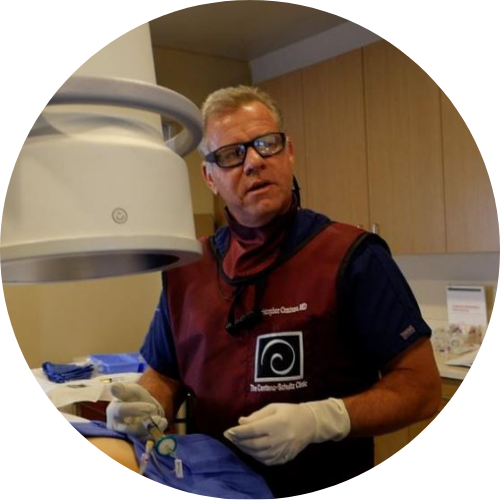
Christopher J. Centeno, MD
Christopher J. Centeno, M.D. is an international expert and specialist in Interventional Orthopedics and the clinical use of bone marrow concentrate in orthopedics. He is board-certified in physical medicine and rehabilitation with a subspecialty of pain medicine through The American Board of Physical Medicine and Rehabilitation. Dr. Centeno is one of the few physicians in the world with extensive experience in the culture expansion of and clinical use of adult bone marrow concentrate to treat orthopedic injuries. His clinic incorporates a variety of revolutionary pain management techniques to bring its broad patient base relief and results. Dr. Centeno treats patients from all over the US who…
Read more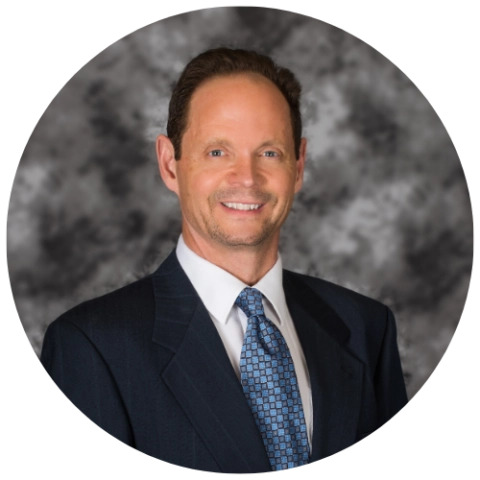
John Schultz, MD
John R. Schultz M.D. is a national expert and specialist in Interventional Orthopedics and the clinical use of bone marrow concentrate for orthopedic injuries. He is board certified in Anesthesiology and Pain Medicine and underwent fellowship training in both. Dr. Schultz has extensive experience with same day as well as culture expanded bone marrow concentrate and sees patients at the CSC Broomfield, Colorado Clinic, as well the Regenexx Clinic in Grand Cayman. Dr. Schultz emphasis is on the evaluation and treatment of thoracic and cervical disc, facet, nerve, and ligament injuries including the non-surgical treatment of Craniocervical instability (CCI). Dr. Schultz trained at George Washington School of…
Read more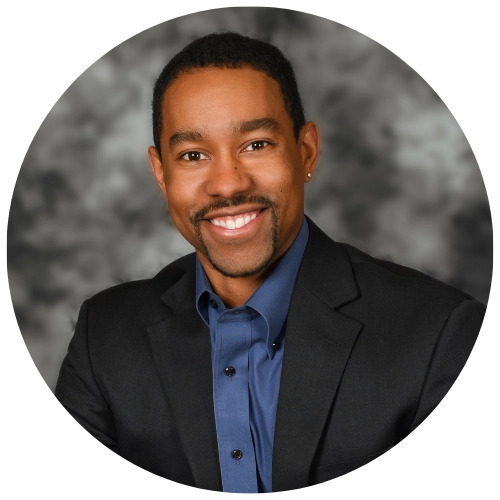
John Pitts, M.D.
Dr. Pitts is originally from Chicago, IL but is a medical graduate of Vanderbilt School of Medicine in Nashville, TN. After Vanderbilt, he completed a residency in Physical Medicine and Rehabilitation (PM&R) at Emory University in Atlanta, GA. The focus of PM&R is the restoration of function and quality of life. In residency, he gained much experience in musculoskeletal medicine, rehabilitation, spine, and sports medicine along with some regenerative medicine. He also gained significant experience in fluoroscopically guided spinal procedures and peripheral injections. However, Dr. Pitts wanted to broaden his skills and treatment options beyond the current typical standards of care.
Read more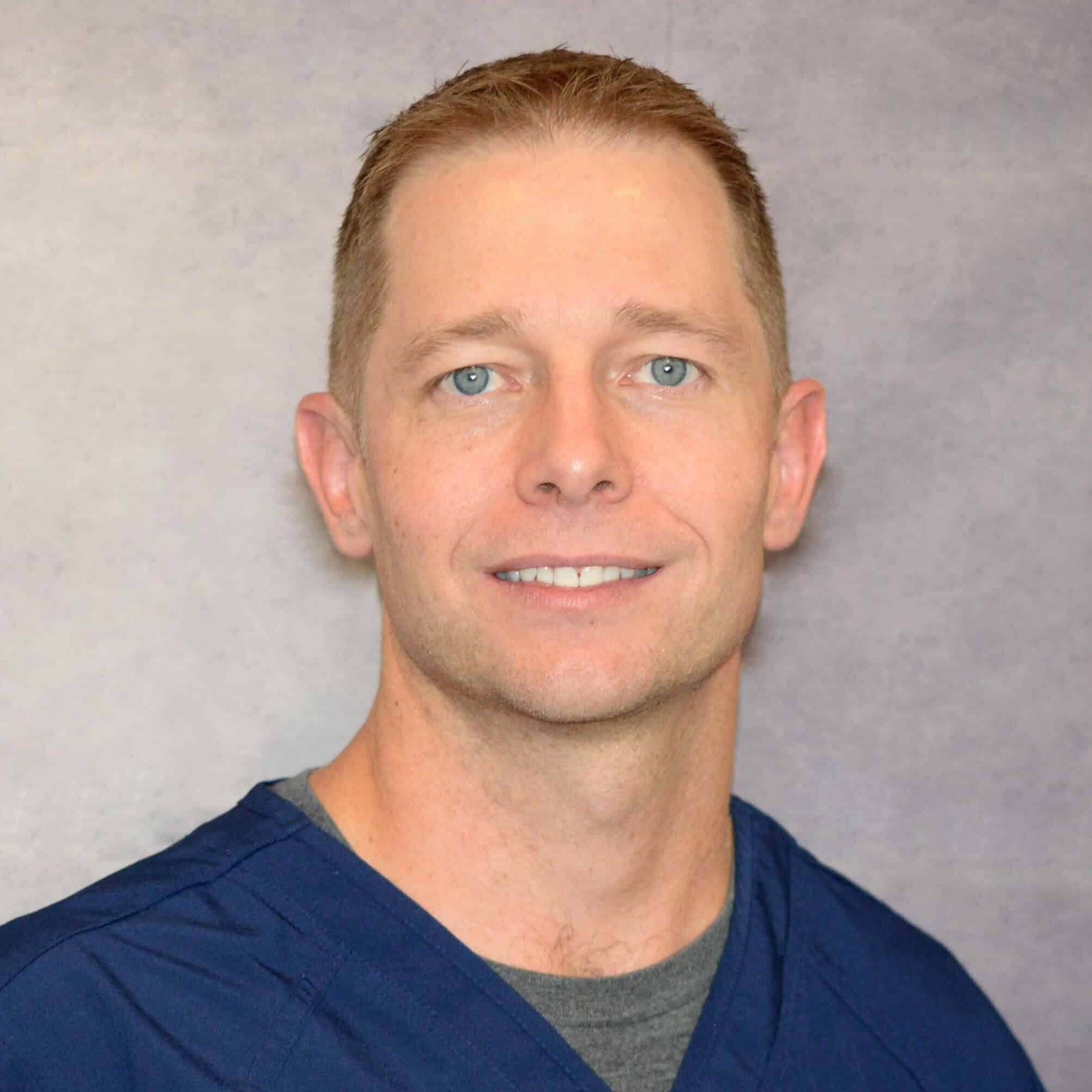
Jason Markle, D.O.
Post-residency, Dr. Markle was selected to the Interventional Orthopedic Fellowship program at the Centeno-Schultz Clinic. During his fellowship, he gained significant experience in the new field of Interventional Orthopedics and regenerative medicine, honing his skills in advanced injection techniques into the spine and joints treating patients with autologous, bone marrow concentrate and platelet solutions. Dr. Markle then accepted a full-time attending physician position at the Centeno-Schultz Clinic, where he both treats patients and trains Interventional Orthopedics fellows. Dr. Markle is an active member of the Interventional Orthopedic Foundation and serves as a course instructor, where he trains physicians from around the world.
Read more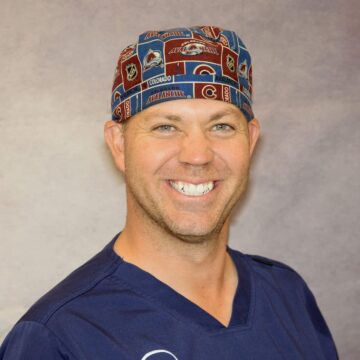
Brandon T. Money, D.O., M.S.
Dr. Money is an Indiana native who now proudly calls Colorado home. He attended medical school at Kansas City University and then returned to Indiana to complete a Physical Medicine and Rehabilitation residency program at Indiana University, where he was trained on non-surgical methods to improve health and function as well as rehabilitative care following trauma, stroke, spinal cord injury, brain injury, etc. Dr. Money has been following the ideology behind Centeno-Schultz Clinic and Regenexx since he was in medical school, as he believed there had to be a better way to care for patients than the status quo. The human body has incredible healing capabilities…
Read more-
What To Expect After PRP Injection: What You Need To Know
PRP is used extensively in the treatment of different musculoskeletal injuries. Dr. Schultz discusses what PRP is, the different types, how it is created, and what to expect after PRP injection. Knowing these facts is critical to your clinical success.
-
Breaking News: New Nebulized PRP Study for Post COVID Patients!
COVID infections can cause long-lasting lung problems. Dr. Schultz discusses a new study at the Centeno-Schultz Clinic which examines the effectiveness of nebulized PRP in patients with lung injury and activity intolerance due to COVID.
-
Orthobiologics – A Better Explanation and Understanding
Orthobiologics are biological substances naturally found in the body that are used to promote quicker healing of muscle, tendon, and bone injuries. Dr. Schultz discusses the different sources of orthobiologics, the different tissue types, and why they are important to you.
-
PRP vs Platelet Lysate [VLOG]
Would you like to see more from Dr. Centeno’s YouTube channel? Follow him here and subscribe! Transcript It’s Dr. Centeno, and I’d like to talk today about PRP versus Platelet Lysate. What’s the difference? At Regenexx, we use multiple different types of platelet and plasma preparations and dial these in so that we can specifically…
-
3 Amazing Facts About Regenerative Orthopedics
Regenerative Orthopedics is a medical specialty focused on identifying and treating orthopedic conditions without surgery. Interventional Orthopedics is a subspeciality of Regenerative Orthopedics. Dr. Schultz discusses three amazing facts on Regenerative Orthopedics.
-
What is Prolozone?
Dr. John Pitts describes Prolozone: what it is, what it’s used for, what the research has shown about it, and an overall assessment of its efficacy. Transcript Dr. John Pitts Hello, everybody. This is Dr. John Pitts, from the Centeno-Schultz Clinic. Today, I like to talk to you about Prolozone. So what is Prolozone? The…
Real Patients. Real Results.
The staff at Centeno-Schultz are both professional and highly competent. My rather complex stem cell/PRP procedure went like clockwork with Dr. Jason Markle’s expertise and…
Frank B.
Dr Pitts is 100% about both patient care and improving quality of life for his patients. I had both PRP in my back and Stem…
Justin D.
I met my Doctor Ugochi Azuike the first week of Dec 2018. She took time, patience and was so methodical examining me and explained the…
Tyrone White
Had stem cell and PRP on both knees end of September by Dr. Schultz of Centeno/Schultz, Regenexx. Here I am the first week of December,…
Paul L.
I had PRP procedure on my elbow and one shoulder. I was extremely happy with results. The level was very high before my procedure and…
Kim L.
Everyone at Regenexx, at the Centeno-Schultz Clinic, were very kind and respectful. Dr. Pitts was the greatest! I appreciated his expertise and his sense of…
Cynthia C.
I would highly recommend Dr. Pitts. I’ve had my knees and elbow done. The PRP (or whatever they call theirs) on tennis/golf elbow was highly…
Tanya S.
About a year ago, Dr. Markle also treated me with PRP on my elbow. I did 2 rounds of that to help with the “tennis”…
Kaylie D.
Have done PRP in back, knees shoulder and hip. Have done stem cells in hip instead of a hip replacement. At 72 I am way…
Ruth S.
I will admit I was a little skeptical at first. Dr. Hyzy did a great job of educating me and ensured me I was a…
Nathan Y.
References:
- Jones IA, Togashi RC, Thomas Vangsness C Jr. The Economics and Regulation of PRP in the Evolving Field of Orthopedic Biologics. Curr Rev Musculoskelet Med. 2018;11(4):558-565. doi:10.1007/s12178-018-9514-z
- Le ADK, Enweze L, DeBaun MR, Dragoo JL. Current Clinical Recommendations for Use of Platelet-Rich Plasma. Curr Rev Musculoskelet Med. 2018;11(4):624-634. doi:10.1007/s12178-018-9527-7
Am I a Candidate?
To answer this question, fill out the candidate form below to request a new patient evaluation, and a patient advocate will reach out to you to determine your next steps. Your one-hour, in-office or telemedicine evaluation will be with one of the world’s experts in the field of Interventional Orthopedics.
